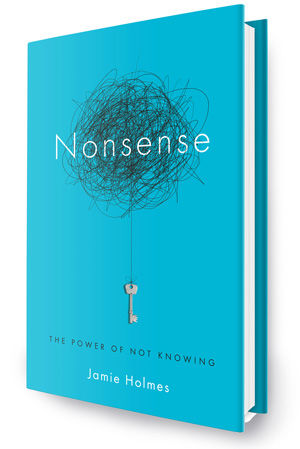Dustin Recommends:

“Parts of Nonsense were so confusing at times, and usually when I get frustrated, I’m done. But I allowed myself to be patient—and found I was more engaged than usual by asking, ‘What is this book trying to teach me? Why am I reading it?’ Taking that time made me realize that the purpose behind the book is to recognize that we all go through nonsense. You have to take that deep breath and say, ‘I have 18 things in front of me—which one is the important one?’ How do you unravel the ball of twine [cover image] to get to that key?”
ur book club started small seven years ago with four or five supervisors from customer service. Not long after, our department grew and we needed a way to talk about hard issues as a team. Book club became a place for people to talk about challenges without taking it personally. It’s a safe space for people to learn from each other and about others’ work.
Now, book club is the most important meeting I go to. It builds a bond between different people. The more time we spend together talking about hard issues, the stronger we are. 10-15 supervisors, trainers, and managers attend book club every other week. Rob Kistler, Chris Shirley, and I attend each one to show our employees that we’re invested in them and their growth.
1. How do you select the books—and the leader of each week’s book club meeting?
There are no real rules about how we choose a book, as long as it can be helpful. Each week, we ask who would like to be a facilitator or presenter to lead the conversation—but it’s always optional. Some presenters just read highlighted portions of the book, then ask, “What do you think?” to the group, while others relate a specific chapter or a page to what they do at work and say, “I’m interested to hear your thoughts on how you’d apply this.” It’s all about what makes that presenter or conversation leader comfortable.
2. Do you read entire chapters before each meeting? Just a few pages?
Sometimes we get through a chapter or two each meeting; sometimes the conversation is so rich we only get through a page. It all depends on where things are organically steered. The only ground rule is that the conversation has to stay respectful. We do disagree—as Rob says, “Disagree in private, support in public”—but we disagree and then move on.
3. What’s the biggest improvement you’ve seen in book club?
It’s taken a number of years for some people to really become comfortable with book club. Some members of our team had never presented in front of an audience, and this has helped them learn that they can stand up and dive into a topic. It allows people to grow their own talents—maybe even discover talents they didn’t know they have. Seeing that growth has been exciting.
4. Does anybody ever say, “I’m just too busy” to try and avoid it?
Book club provides the time and place to step away from the daily grind and dig in to hard issues. And everyone comes—they really do. A few years ago, some people may have said, “This isn’t a valuable use of my time.” But that’s because we didn’t have an engaged workforce. Thanks to Rob’s vision for our department , now we do, and as people have bought into and trusted the process, they love book club. It helps us see the bigger picture. We now have a much stronger relationship between departments, where we were all in our silos before. Multiple groups work together on projects, even if it doesn’t impact their daily work. They understand that it helps us achieve what we’re going after: learning together to become a stronger team and ultimately provide better patient care.
5. Is there any tension between employees—or tension about the books you read?
There’s no hierarchy in book club; we’re all in the room together, all trying to learn for the same purposes. It’s less about what the book tells us to do and more about processing the information as a team. Those conversations make our day-to-day work more efficient. If I don’t have a relationship with someone in a different department, I can say no pretty easily when they ask for help. But if we have a relationship because of Book Club and you ask me for help, I now have a commitment. And I’m not going to turn that down.
Dustin Banks
Three years ago, an internal study found that Huntsman Cancer Institute employees experienced significant compassion fatigue. Director of Nursing Services Sue Childress teamed up with HCI executives, providers, and managers to combat burnout by promoting conscientious leadership and a culture of civility.
Dr. Kyle Bradford Jones confronts a long-held cultural icon in medicine: the cowboy doctor. He argues that living up to the cowboy mythology undermines how physicians provide care – in trying to do it all, they actually do more harm. His cure for cowboy medicine? Relying on a great team.
Teaching the next generation of health care providers happens every morning in 10 minute chunks throughout the hospital. The Surgical Intensive Care Unit reimagined the physician rounds to feature the patient’s nurse, instead of the patient’s physician-student. They found that this simple change created a stronger interprofessional team and advanced nursing practice.
